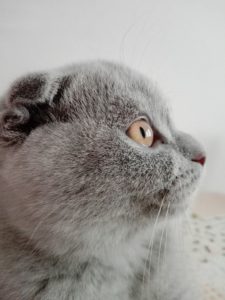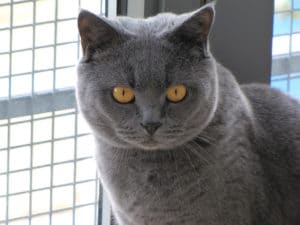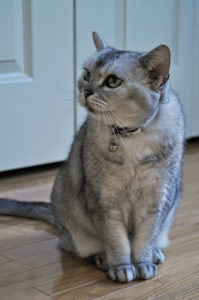How to breed Scottish Folds Correctly – Rules and Breeds Mix
The rules of breeding Scottish Fold cats to avoid health problems
The existence of Scottish Folds as a breed can be traced back to one moment in time. Back in Scotland, a farm kitty names Susie gave birth to a litter of kittens. Out of these little fellows, a few came out with the trademark folded ears.
This trait has been carried on into the future and turned into a popular breed. Yet, the same particularities that we love in these cats can have a negative impact on their health. For this reason, breeding Scottish Folds needs to follow a few rules.

The origin of Scottish Fold particularities
After Susie, the common ancestor of Folds gave birth to the fold-eared kittens, a farm neighbor started breeding them. This was happening back in 1966 with the help of a genetics expert.
After 3 years of breeding, they observed that resulting cats had their ears folded only in part. The rest were regular, straight-eared kittens. Finally, this pointed out to the fact that the ears were the result of a genetic mutation. The cause of the mutation was a simple dominant gene.
Because of the mutation and its’ implications, the breed was not accepted and recognized in some parts of Europe. Despite the rejection, the breed spread across America and new crosses were experimented. Fast forward to present days and Scottish Folds enjoy a high degree of popularity among cat lovers.
Can you breed two Scottish Folds!?
No. You should never cross 2 Scottish Fold cats. In short, the dominant gene responsible for the mutation causes further health issues. These issues are potentially life-threatening. Yet, responsible breeders know how to avoid them.
Explaining the genetics behind it…
The gene that gives ears the fold is known as Fd (fold gene if you will). Cats with folded ears carry either 1 or 2 copies of the Fd gene.
When a cat with 2 genes mates with any type of regular cat, the entire litter of kittens will get folded ears. But, the same parent cat will also carry other severe health issues. Because of this, such breeding is not allowed.
Health problems related to the gene explained…
Bone & cartilage suffer an abnormal development process because of the gene. The folded ears are also an effect of bad cartilage development. The cute trait that we all love and cherish is nothing short of an error.
The disease caused by the dominant gene is called osteochondrodysplasia or OCD. Up to this day, studies show that all cats with the physical fold have this condition.
Two-gene Scottish Folds of the gene suffer from abnormal bone structures and degenerative joint disease. This causes pain, lack of mobility and sets out early in life.
Cats with only one copy of the gene suffer as well, but at a lower rate. Some lack symptoms altogether or the onset happens later in life. But, the heterozygous cats (the 1 gene carriers) can suffer from progressive arthritis. This means pain in the joints and difficulty moving.
Symptoms of OCD can start to manifest as early as 4 months of age. Here’s how it affects the cats:
- Stiff tail
- Thick bones & tender to touch
- Limping
- Lack of mobility (avoids running or jumping, has trouble moving around)
- Pain that increases with age
Of course, there are differences in how each cat is affected by these diseases. Some have little to no symptoms; others suffer greatly and from an early age. Others have mild manifestations of disease and can live a relatively normal life. But they do experiment pain and might have a hard time with moves and positions of the body.
Other claims about Scottish Fold health included:
- Mites
- Infections of the ears that cause hearing impairment
- Deafness
In time, these claims were not sustained.
No matter how you look at it, crossing 2 folded cats is a risk not worth taking for the sake of the kittens.
The rules of breeding Scottish Folds
As you can understand from the article so far, genetics produce bad results in Scottish Fold crossings. Because of this, cat associations and medical experts passed on some ground rules to avoid the suffering of cats. These, however, do not prevent irresponsible breeders from producing unhealthy kittens.
Homozygous Fold x Homozygous Fold (2 Fd genes + 2 Fd genes)
Carriers of 2 copies of the Fd gene (homozygous) if crossed, produce all folded kittens. But, the kittens will also develop severe bone and cartilage problems. Because of this, breeding folded Scottish Folds is unethical.
Homozygous Fold x Heterozygous Fold (2 Fd genes + 1 Fd gene)
Breeding a homozygous Fold to a straight-eared one will result in all cats having folded ears. But 50% of them will be heterozygous with fewer chances of severe health problems. The other 50% will produce homozygous kittens with high chances at a life of suffering. Therefore, this combination is also unethical.
Heterozygous Fold x Straight-eared cat (1 Fd gene + 0 Fd gene)
The only ethical and healthy way of breeding is a cross between a heterozygous Scottish Fold and a straight-eared cat of any type. Such mating produces 50% cats with folded ears and one Fd gene copy. The remaining 50% will be healthy and regular straight-eared kittens.
When only one parent carries the Fd gene, the degenerative health problems don’t show on the offspring. When symptoms appear though, they are very mild and impose no problems.
What breeds can you use to cross with Scottish Folds!?
British Shorthairs and American Shorthairs are the most common choice for mating Scottish Folds. Now breeders go directly to these two breeds when mating Folds.
Kittens that result from mating Scottish Folds with British Shorthairs or American Shorthairs are considered purebred.

British Shorthair Cat
The kitten litters will produce 50% folds and the rest non-folds. Consequently, all the cats with folded ears will be recognized and registered as Scottish Folds. The non-fold cats will receive the British or American Shorthair tag.

American Shorthair Cat
When going to a breeder to get a Fold, keep in mind that all cats have straight ears in the first weeks. Often, breeders make kittens available only when they are 12 – 16 weeks old and the fold emerges.
Tip: When getting a Scottish Fold, choose your breeder with patience. Testing is performed to establish the health and quality of the crossing. If the kittens signal stiffness or low motility, the breeding may not be ethical.
Conclusion
All in all, Scottish Folds can be generally healthy cats. When the breeding process is ethical and healthy, your Scottish Fold should experience a high quality of life. Of course, as long as you commit to regular grooming, nutritious feeding, playing, medical care and lots of loving.